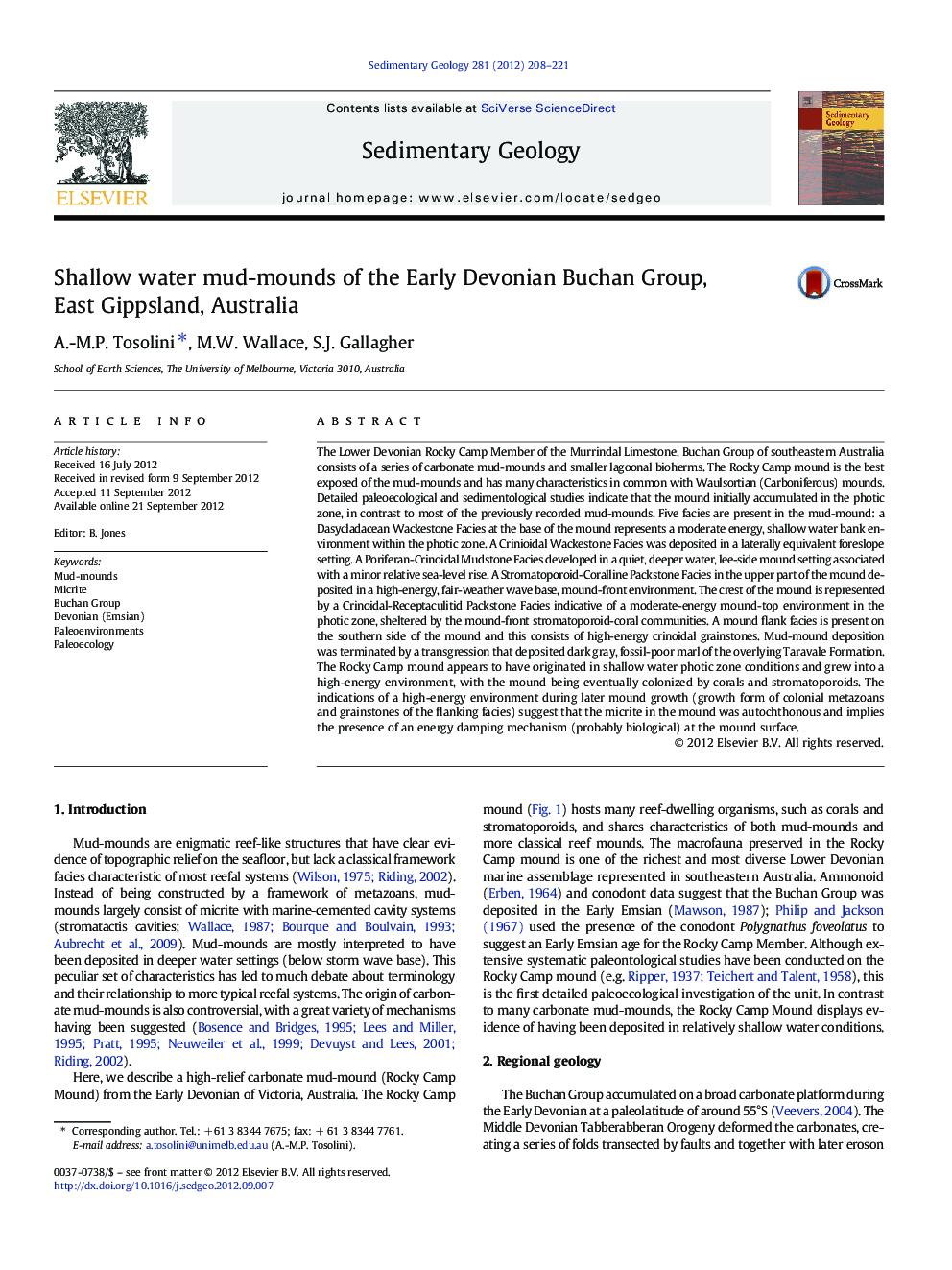| کد مقاله | کد نشریه | سال انتشار | مقاله انگلیسی | نسخه تمام متن |
|---|---|---|---|---|
| 4689688 | 1636080 | 2012 | 14 صفحه PDF | دانلود رایگان |

The Lower Devonian Rocky Camp Member of the Murrindal Limestone, Buchan Group of southeastern Australia consists of a series of carbonate mud-mounds and smaller lagoonal bioherms. The Rocky Camp mound is the best exposed of the mud-mounds and has many characteristics in common with Waulsortian (Carboniferous) mounds. Detailed paleoecological and sedimentological studies indicate that the mound initially accumulated in the photic zone, in contrast to most of the previously recorded mud-mounds. Five facies are present in the mud-mound: a Dasycladacean Wackestone Facies at the base of the mound represents a moderate energy, shallow water bank environment within the photic zone. A Crinioidal Wackestone Facies was deposited in a laterally equivalent foreslope setting. A Poriferan-Crinoidal Mudstone Facies developed in a quiet, deeper water, lee-side mound setting associated with a minor relative sea-level rise. A Stromatoporoid-Coralline Packstone Facies in the upper part of the mound deposited in a high-energy, fair-weather wave base, mound-front environment. The crest of the mound is represented by a Crinoidal-Receptaculitid Packstone Facies indicative of a moderate-energy mound-top environment in the photic zone, sheltered by the mound-front stromatoporoid-coral communities. A mound flank facies is present on the southern side of the mound and this consists of high-energy crinoidal grainstones. Mud-mound deposition was terminated by a transgression that deposited dark gray, fossil-poor marl of the overlying Taravale Formation.The Rocky Camp mound appears to have originated in shallow water photic zone conditions and grew into a high-energy environment, with the mound being eventually colonized by corals and stromatoporoids. The indications of a high-energy environment during later mound growth (growth form of colonial metazoans and grainstones of the flanking facies) suggest that the micrite in the mound was autochthonous and implies the presence of an energy damping mechanism (probably biological) at the mound surface.
Journal: Sedimentary Geology - Volume 281, 15 December 2012, Pages 208–221